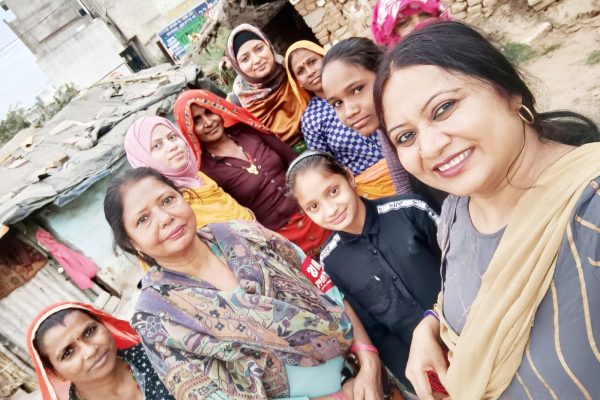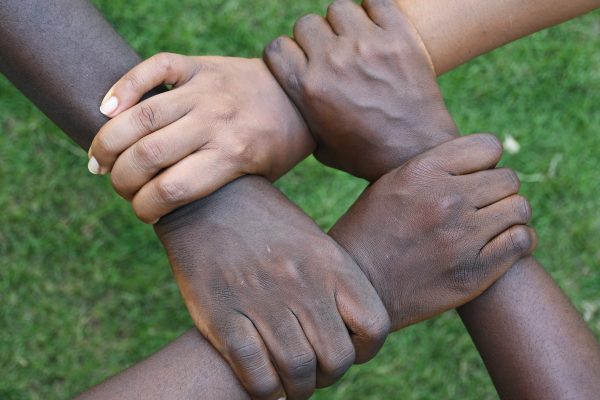While water may be a foregone conclusion for many of us who need only turn on the faucet to wash our hands, people all around the world suffer from water scarcity and poor sanitation.
Water is an essential resource that affects every facet of daily living, from health and safety to livelihood and education. In 2010, the United Nations General Assembly voted to recognize “the right to safe and clean drinking water as a human right.” While this assertion appears obvious at its surface, it does not guarantee water security for all. Countries must only make an effort to provide water for the entirety of its population. This means that for upwards of a billion people worldwide, their lack of access to a water tap is not considered a human rights violation. Moreover, 41 countries, including the United States, elected to abstain from the vote entirely.
The causes of water insecurity are systemic and far-reaching. Poor infrastructure and poverty go hand in hand.
This is true across the globe, from the cities in the Minority World to rural areas of the Majority World. The city of Flint is an important case study in systemic negligence of poorer black and brown communities when it comes to water infrastructure. For more than a century, the state of Michigan used the Flint River to dump waste products produced by nearby car, meatpacking, lumber, and paper factories, polluting it with harmful toxins. For this reason, Flint residents had clean water piped from Detroit for almost 50 years. In 2011, the city, struggling economically, came under Governor Snyder’s control. He appointed an unelected emergency manager to manage the city’s finances. In order to cut costs, the government began pumping untreated, corrosive water from the Flint River into households, schools, and businesses. The result is that lead from the pipes leaked into thousands of homes and made people sick. While the situation in Flint made international headlines, it is certainly not the first or last of its kind. The pandemic has exacerbated existing infrastructure issues, as people stuck at home may have no choice but to consume the contaminated water pumped through their pipes.
The Flint water crisis taught us an important lesson: that our right to water can be restricted based on social factors like race, ethnicity, gender, disability, and socioeconomic status.
In fact, nearly 1 in 10 people, 666 million people, do not have access to an improved water source. An improved water source is defined by the World Health Organization (WHO) as, “a source that, by nature of its construction, adequately protects the water from outside contamination, in particular from faecal matter.” One study, “Clean Water”, published in 2019 compared trends in water sources between different regions of the world. Researchers found that between1990 and 2015, the number of people with access to an improved water source increased in every region except Sub-Saharan Africa, which rose to constitute almost half of the global total with 326 million people. When considering water safety, it was estimated that 29% of the global population, 2.1 billion people, did not have access to safe drinking water in 2015. These figures reinforce the observed pattern that predominantly poor black and brown communities worldwide suffer from a lack of functional and efficient water infrastructure to meet their survival needs.
War and conflict play a large role in disrupting water and sanitation services.
Yemen, for example, has been the setting for intense conflict since 2014. For a country which was already underdeveloped and struggling economically, maintaining Water, Sanitation & Hygiene (WaSH) services amidst armed clashes and airstrikes poses an impossible challenge. Since the start of the Saudi-led military campaign in 2015, airstrikes have continuously and intentionally targeted, damaged, and destroyed civilian infrastructure, crippling the water and energy sectors, and impeding public services like water treatment and delivery. Untreated waste proliferated throughout the environment, and people living in affected areas were left with little choice but to engage in unhealthy drinking, cooking, and washing practices. Research investigating the causes of the cholera epidemic in Yemen revealed an interconnection between targeted attacks on civilian infrastructure and vulnerability to infection. Yemen is currently suffering from the largest recorded cholera epidemic in history, the number of cases dwarfing the previous record set by the outbreaks triggered by the 2010 earthquake in Haiti three times over.
In sites of conflict, economic depression, medical shortages, disruption of public services, and the dangers posed by armed conflict lead to displacement, poverty, hunger, and illness. The dangers of living in a conflict centre has caused the displacement of millions of people all around the world. In total, the UNHCR estimates that 79.5 million people have been forcibly displaced worldwide at the end of 2019. Refugees and internally displaced people from Syria, Columbia, Venezuela, Afghanistan, Yemen, Palestine, and Myanmar and beyond may end up in refugee camps. Camps may be overcrowded, unsafe, experience resource shortages, and have inadequate WaSH services. Displaced people are particularly vulnerable to water insecurity and the health risks associated with insufficient WaSH access.
Climate change threatens to exacerbate existing water scarcity and further restrict access to water systems and sources.
As global and local populations continue to grow, water systems will continue to be placed under increased stress as our existing infrastructure must stretch to meet higher and higher demands. Extreme weather patterns are expected to increase in frequency and intensity. In areas that experience a natural disaster, their water, energy, and transportation infrastructure can incur devastating damage and destruction that impairs their function. Approximately 74% of natural disasters between 2001 and 2008 were water-related phenomena. Droughts and floods affect food production, contaminate water supplies, and affect water availability.
As sea levels continue to rise, fresh water sources are expected to become contaminated with salt. As flow in rivers and streams dwindles, the concentration of pollutants will consequently rise, and animals will be forced to seek out water sources closer and closer to where people live. This creates the opportunity for human to animal transmission of zoonotic pathogens and the emergence of novel and harmful viruses. The WHO estimates that by 2025, an alarming 1/2 of the world’s population will be living in water-stressed areas.
By improving water access, we can ensure health and safety of vulnerable communities and work our way closer to achieving social equality.
If we choose to invest in water infrastructure and initiatives, we can reduce the risk of water-borne illnesses. Consumption of contaminated water can cause diarrhoea, cholera, dysentery, typhoid, and giardia, and many other diseases. According to the WHO, 485,000 people die each year from diarrheal diseases caused by drinking contaminated water. In low-income countries, unsafe drinking water accounts for 6% of deaths.
Providing access to clean water is the most effective water-borne disease prevention measure. Another effective measure is to educate families and children about safe WaSH practices. By ensuring people have clean water to drink, cook, wash, and irrigate with, we can work towards eradicating a number of devastating transmissible diseases.
The burden of water collection falls more heavily upon the shoulders of women and girls worldwide. A report by UNICEF in 2017 surveying 18 countries reveals that, “women and girls are responsible for water collection in 8 out of 10 households with water off premises.” The implications of this disproportionate responsibility are far-reaching, contributing to gender inequality. Often, the task of collecting water is labour-intensive and time-consuming. In West Bengal, India, and Bangladesh, girls are 5.3% more likely to be responsible for water collection and skip school. In a 2012 report, it was determined that women in sub-Saharan Africa collectively spent 16 million hours each day collecting drinking water.
Therefore, not only does this responsibility reinforce potentially harmful gender roles for women, it also takes up a lot of their day, keeping them from spending time in classrooms, learning skills, and working. This in turn contributes to a lack of social mobility, and works to maintain the education, wage, and social gap.
These are just two examples that demonstrate the potential value of improving water, sanitation, and hygiene access. We see the right to water reflected in Hussain’s story, who, along with his family, was denied access to water for three days before the battle of Karbala. We follow in his example by committing ourselves to the practice of compassion and the cause of social justice. From our team in Michigan delivering 30,000 bottles of water to their neighbours in Flint to our team in Dar es Salaam building a water well to service 6,000 people in need, Who is Hussain is working to improve water security worldwide.




